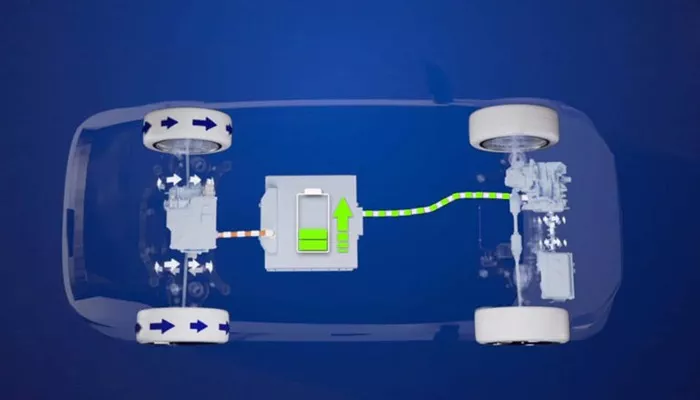ZF, a well-known German automotive supplier famous for its automatic transmissions, has developed a new type of range extender for electric vehicles.
Typically, plug-in hybrids (PHEVs) and extended-range electric vehicles (EREVs) share similar parts. Both have a gasoline engine, a high-voltage battery, and an electric motor. The key difference is that in an EREV, the gasoline engine is not directly connected to the wheels. Instead, it only runs a generator that charges the battery to increase driving range.
ZF wants to change this by allowing the generator system to also power some of the wheels. This new product is called the Electric Range Extender Plus, or eRE+. It supports both 400-volt and 800-volt systems and includes an inverter, a planetary gearset, and control software all in one unit.
What makes ZF’s eRE+ special is that it has a built-in clutch and differential. This means it can work as a generator to charge the battery or as an extra drive system to power wheels directly. This integration saves time and money for carmakers because they get two functions in one device.
It is important to note that the gasoline engine still does not drive the wheels mechanically. Its only job is to turn the generator. The generator, which acts like an electric motor, is the part that actually sends power to the wheels.
The Electric Range Extender Plus is planned to enter production next year. It can deliver between 70 and 150 kilowatts (about 94 to 201 horsepower). By comparison, the more traditional Electric Range Extender (eRE) offers between 70 and 110 kW (94 to 147 hp). The traditional eRE is usually placed on the rear axle, while the new Extender Plus is designed to fit under the hood, similar to a combustion engine setup. Together, they can provide over 300 horsepower, which is plenty for most vehicles.
Why develop such a system instead of just using a plug-in hybrid? ZF explains that using an EREV system is often cheaper. This is especially true when carmakers have invested heavily in electric vehicle platforms that are not built to handle traditional combustion engines.
Dr. Otmar Scharrer, ZF’s senior vice president of research and development, said, “The growing interest in range extenders shows that this technology still has great potential, especially for vehicle platforms designed for battery-electric drivetrains.”
With this technology, automakers can add a small gasoline engine to an EV platform and make good use of the existing electric design. ZF is not alone in exploring such ideas. Renault and Geely’s Horse Powertrain spin-off recently revealed their own approach to turning EVs into hybrids.

